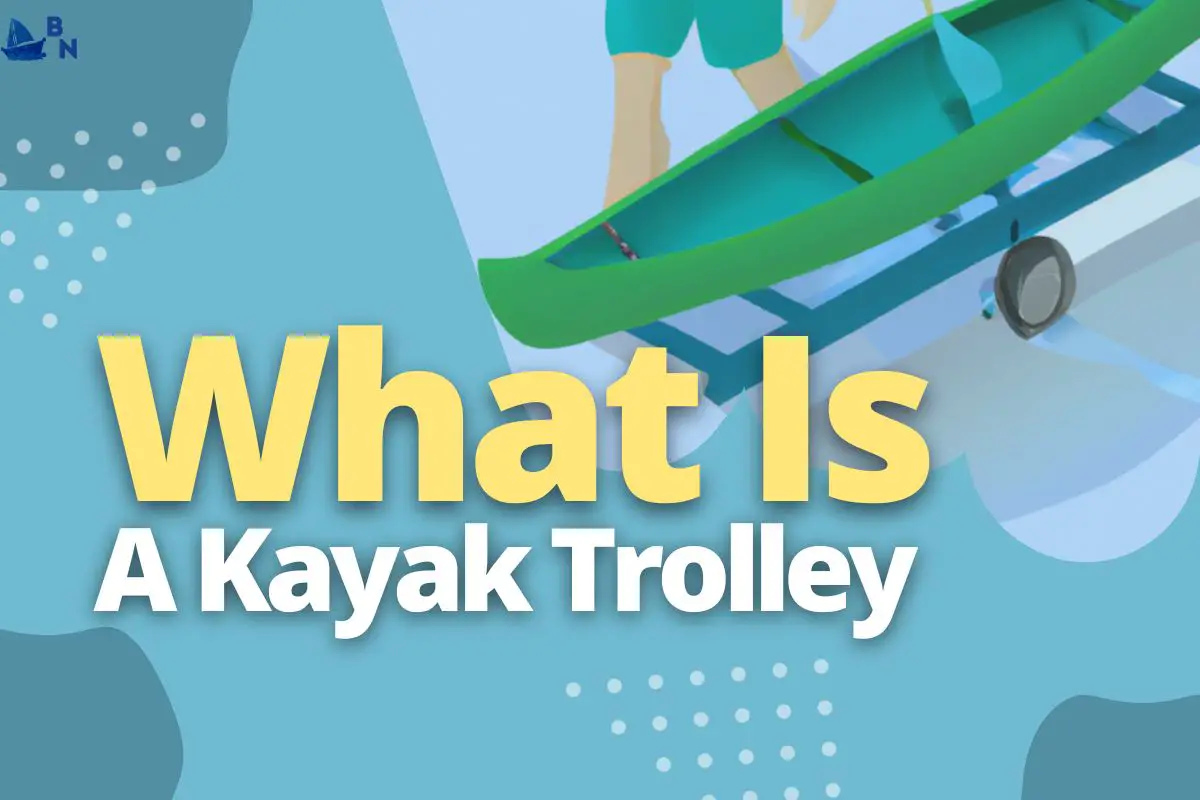A kayak trolley is a device that helps you move your kayak from one place to another with ease. It is a great way to transport your kayak to and from the water, and it can also be used to store your kayak when not in use. There are many different types of kayak trolleys on the market, so choosing one that best suits your needs is important.
A kayak trolley can be the solution for you if you want to make moving your kayak simpler. Keep reading this blog post for a full picture of a kayak trolley and how it can benefit you.
Key Takeaways
- A kayak trolley is a small, wheeled cart designed to help you transport your kayak from one location to another.
- Kayak trolleys are typically made out of aluminum or other lightweight materials, and they often come with straps or other features that help to secure the kayak in place on the trolley.
- Some kayak trolleys also include storage baskets or compartments, which can help carry gear or other items along with your kayak.
- Kayak trolleys can be very helpful when transporting your kayak over uneven terrain or long distances.
- If you are looking for a way to make transporting your kayak easier, a kayak trolley may be a good option for you.
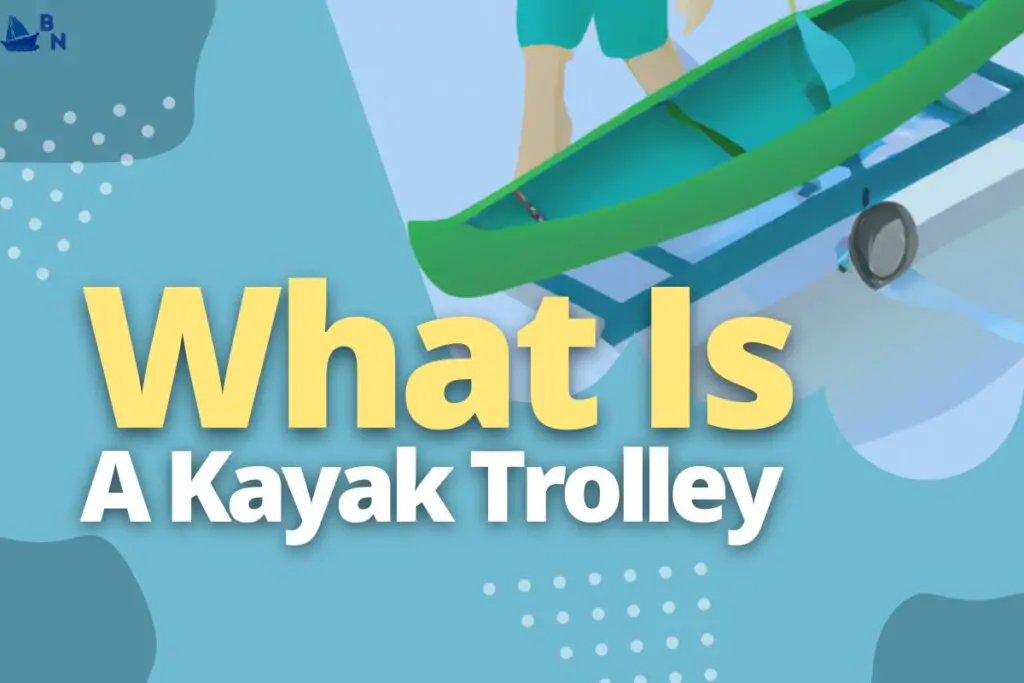
Here’s The Answer To What Is A Kayak Trolley
A kayak trolley is a small cart that helps you easily move your kayak from one place to another. It is a great way to transport your kayak to and from the water’s edge and around your vehicle in a parking lot.
Choosing the correct kayak cart is crucial because there are numerous varieties available. The weight of your kayak should be the first factor taken into account when selecting a kayak trolley.
Most carts have a weight limit of between 100 and 200 pounds. If your kayak weighs more than this, you may need to consider a heavier-duty option.
The next step is to identify what kind of cart you require. There are two basic types of carts: those with scupper holes and those without.
Scupper holes are designed for sit-on-top kayaks, while non-scupper hole carts can be used for sit-in and sit-on-top kayaks.
A Kayak Trolley Is Designed To Help You Move Your Kayak From One Place To Another
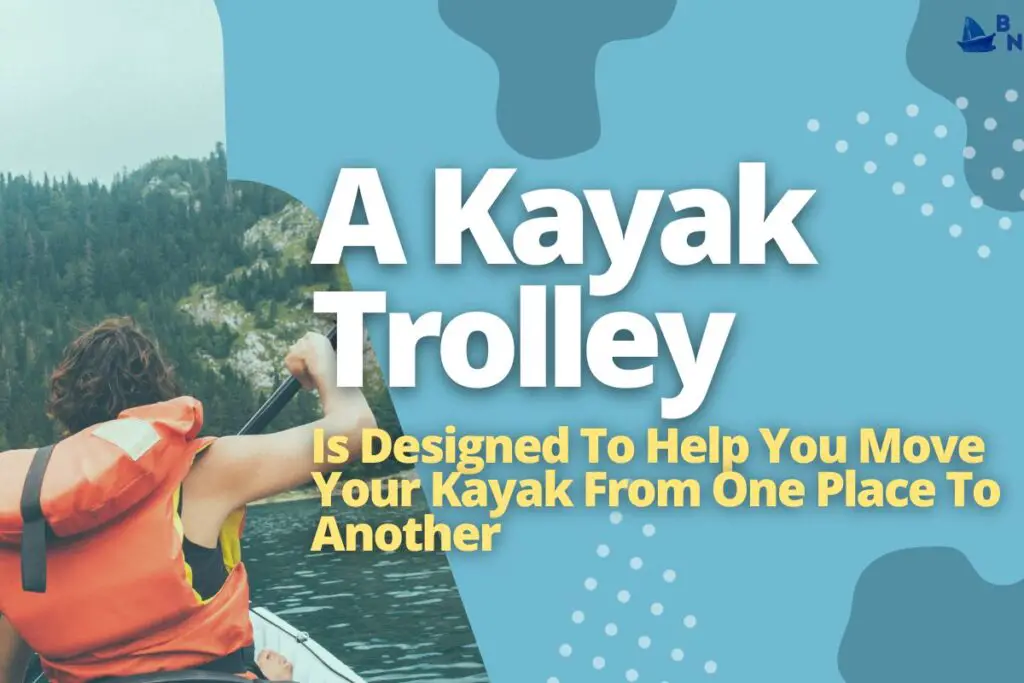
A kayak trolley is a small, lightweight cart that is designed to help you move your kayak from one place to another.
It’s a small, lightweight cart designed to help you move your kayak from one place to another.
The best thing about a kayak trolley is it’s small and compact, so it can easily be stored in the trunk of your car or under your bed when not in use.
Kayak Trolleys Are Usually Made Of Aluminum Or Plastic And Have Two Or Four Wheels
There are two main types of trolleys: aluminum and plastic. Typically, aluminum trolleys are more expensive than polypropylene ones but are also stronger and easier to maintain.
The most important thing to consider when purchasing a kayak trolley is the size of your kayak. If you have a small kayak, there’s no need to buy an expensive large aluminum model because it will be overkill.
There are also different types of wheels available on trolleys. Two-wheeled models tend to be more stable than four-wheeled ones when traveling over rough terrain as they have less weight on each wheel.
Most Kayak Trolleys Also Have A Strap Or Handle To Pull The Trolley Behind You
It’s important to note that most kayak trolleys also have a strap or handle that you can use to pull the trolley behind you.
This is especially useful when traveling by foot. Still, it’s also handy if your car has limited storage space and doesn’t have a roof rack.
The strap should be made out of strong material, such as nylon webbing or canvas, so it doesn’t rip when put under pressure from carrying heavy gear (such as paddles) on top of the kayak.
It should also be long enough to fit around both ends of your boat—ideally with extra length in case one side needs more support than the other during transport.
Kayak Trolleys Are A Great Way To Transport Your Kayak From Your Car To The Water
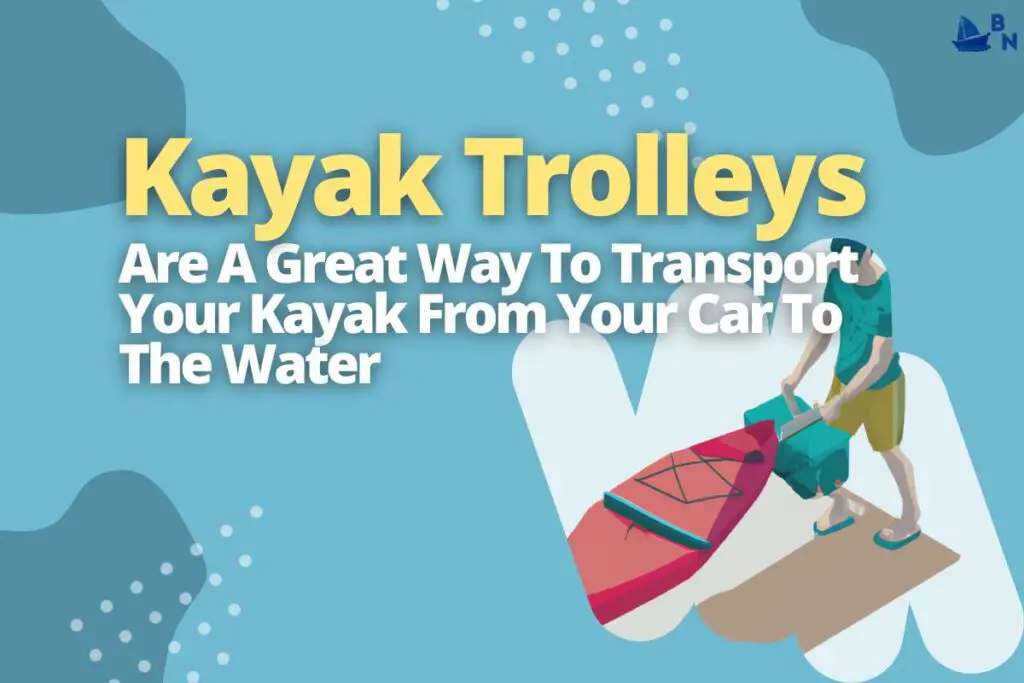
Transporting your kayak can be a hassle. You have to get it out of the car, put it on top of the roof rack, strap it down and hope for the best.
Then, when you arrive at your destination and start paddling, who knows what happened to your hard-earned investment in this high-quality watercraft?
There are other options for transporting a kayak besides strapping it onto the top of your car: you could buy a trailer for $2000-$6000 or invest in an overpriced rack system that attaches to the back end of your vehicle.
But if you want an easier way to carry your boat from point A to point B without breaking the bank (or risking damaging it), consider investing in a kayak trolley.
Some Kayak Trolleys Also Come With Features Like A Storage Basket Or Fishing Rod Holders
If you’re using your kayak trolley a lot, it helps to have features that make things easier and more convenient. Some kayak trolleys have features like a storage basket or fishing rod holders.
This means you can carry all your gear in one trip instead of making several trips back and forth between the car and the water.
The best kayak trolleys are lightweight and portable enough that they won’t weigh down your kayak but strong enough that they won’t break when transporting heavy loads.
They also have adjustable straps so you can attach them easily over any size or shape of hull or decking surface, allowing for versatility. And convenience for transporting larger items such as coolers on land or fish hooks/lines while out on the water.
When Choosing A Kayak Trolley, Consider The Weight And Size Of Your Kayak
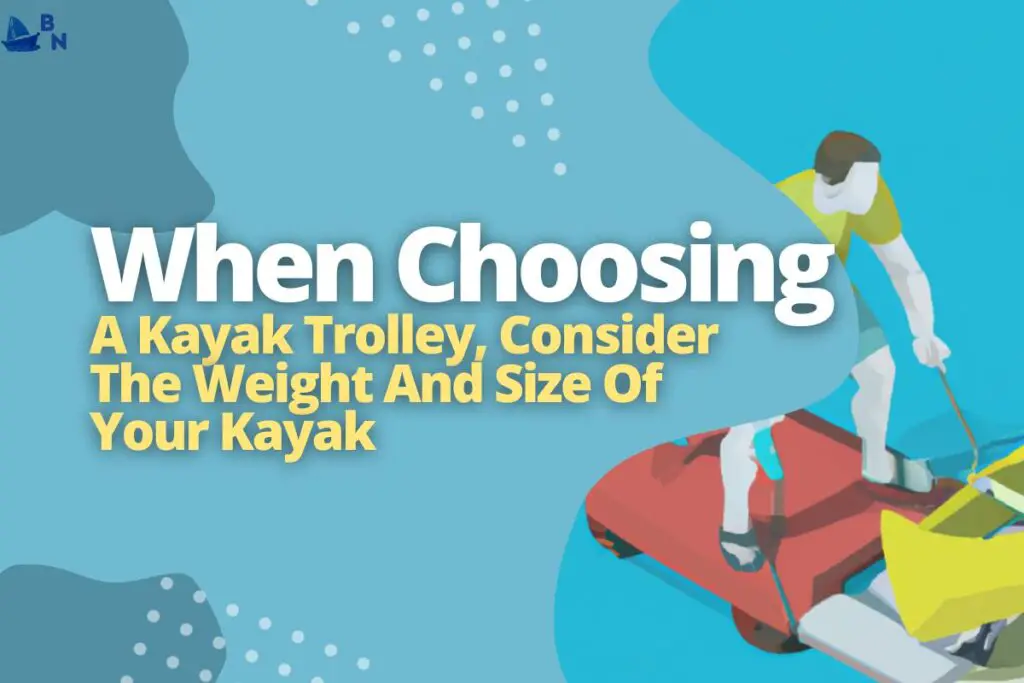
When it comes to choosing a kayak trolley, there are a few things you should consider:
- The weight and size of your kayak. This can help you decide which kind of trolley is best for your needs.
- The terrain where and how far you’ll be traveling. Suppose you’ll be traveling over rough terrain. In that case, that’s something else to consider when choosing the right kind of trolley for your needs.
- How many people are using the trolley? Suppose only one or two people are pushing the kayak on land. That might mean an electric motorized option would work better than an engine-powered one with no bells or whistles attached (like lights).
The Advantages Of Using A Kayak Trolley
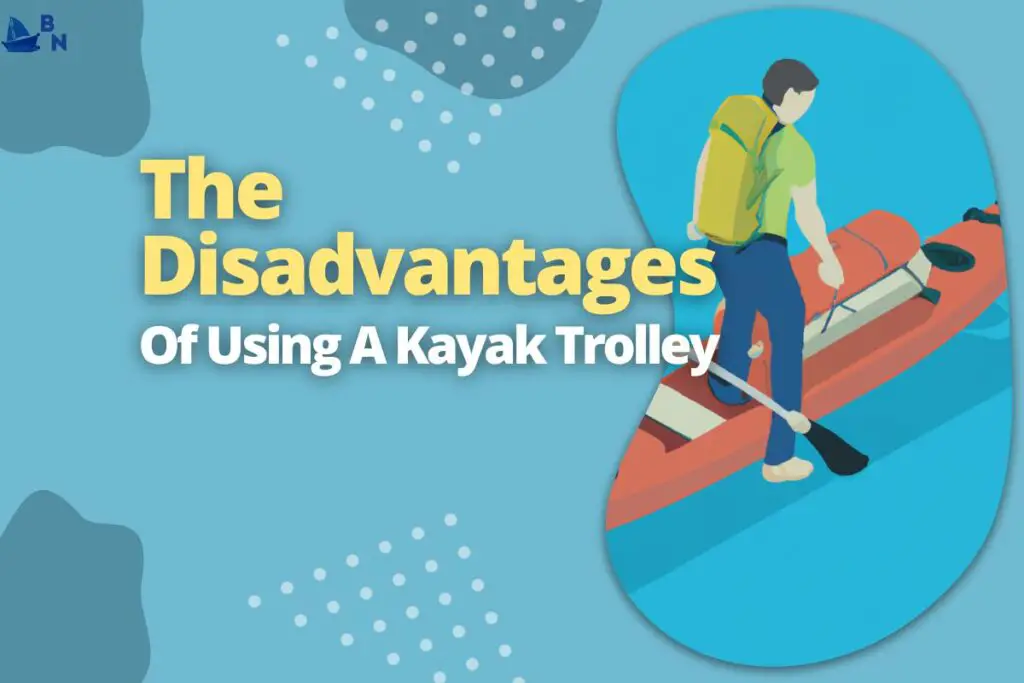
If you’ve ever had to transport a kayak, you know what a hassle it can be. But with a kayak trolley, your stress level will decrease significantly. They are:
- Lightweight and easy to use
- Portable
- Durable and rust-resistant (most are air-filled)
- UV-resistant
The Disadvantages Of Using A Kayak Trolley
- The wheels can get stuck in mud, sand, or gravel. This can be a problem when traversing through forested areas, or your kayak is filled with gear.
- Straps can get caught on branches and other obstacles as you move through the woods, which could mean that your trolley isn’t very helpful!
- Overloading your trolley will make it more likely to tip over and damage your kayak.
How To Use A Kayak Trolley?
Using a kayak trolley is straightforward, but if you’ve never used one before, it can take some time to get the hang of it. Here’s how:
- To load your kayak onto the trolley, you’ll want to park the car with the rear wheels touching your chosen launch site. If there’s no way to park, just drive up to it and reverse into position as far as possible without hitting anything or taking off any rear doors.
- Load your kayak onto its side (so it’s not upside down), then lift this end onto its cradle by lifting it from under its cockpit area. While also pushing forward with your hand on top of its hull and pulling back against its seat/deck section. Once loaded in place, look where you need to attach straps for extra support during transport. These straps should be fairly easy to spot because they’re usually wrapped around each other behind a plastic cover which will have been removed when loading began.
Things To Look For When Buying A Kayak Trolley
- A trolley should be able to carry your kayak. This seems obvious, but it’s the most important thing to consider when shopping for a trolley. If you want something that can only carry one kayak, then go with that option. Otherwise, pick up a two-person or four-person model with plenty of room for storage on top.
- You want your trolley to be easy to use. It’s not fun or convenient if your trolley is too difficult to set up or break down once you get it in place—especially if you need it often. Look for lightweight models and ergonomic handles for easy maneuvering over rough terrain (if applicable).
- You want your trolley to work well under various conditions and environments: rain, snow, and wind might all come into play while using this type of equipment outdoors, so make sure yours will hold its own against these things by choosing wisely when picking out which one suits all those needs best.
Conclusion
A kayak trolley is a great way to transport your kayak from the car to the water. They are easy to use and make getting your kayak to the water much easier.
There are many different types of kayak trolleys on the market, so it is important to do your research before you purchase one. Kayak trolleys range in price from around $30 to $200, so there is a lot of competition in this market.
If you are looking for a kayak trolley, read our other articles on this topic. We encourage you to be proactive and anticipate updates on our website and other social media channels.

